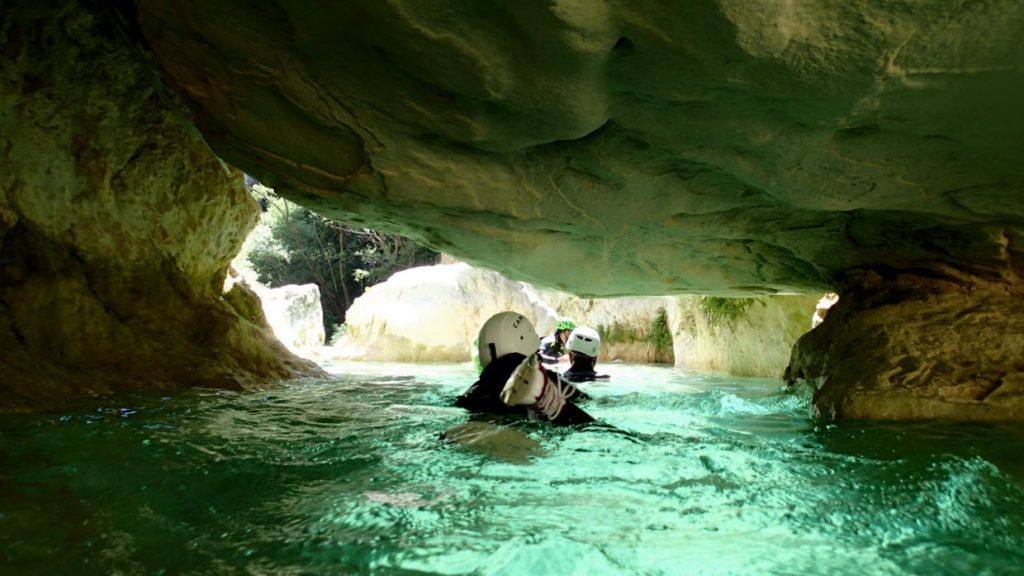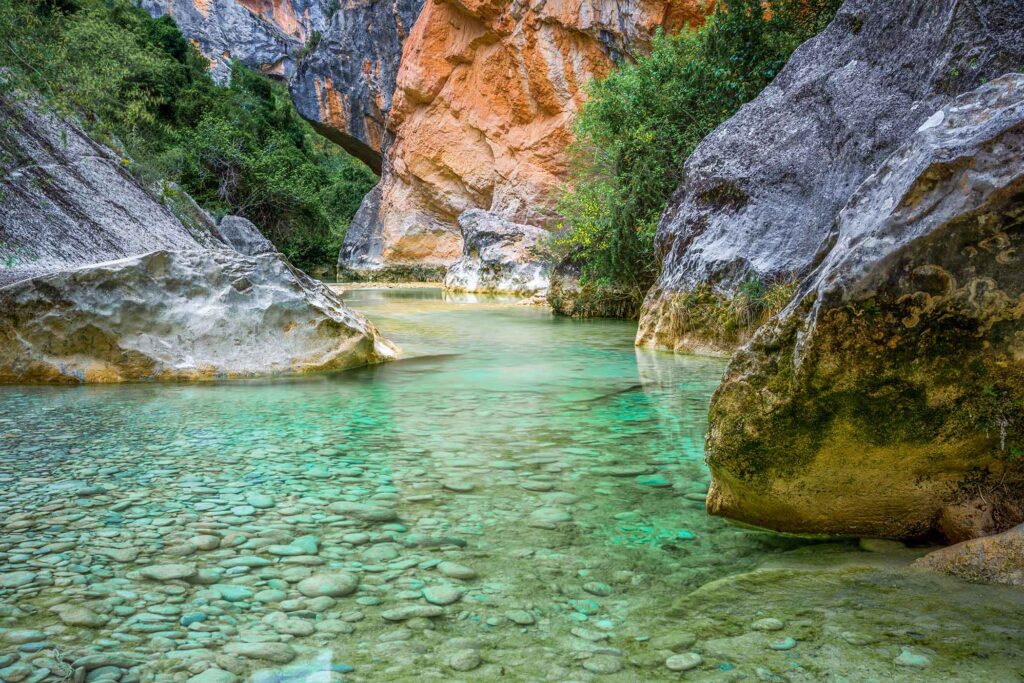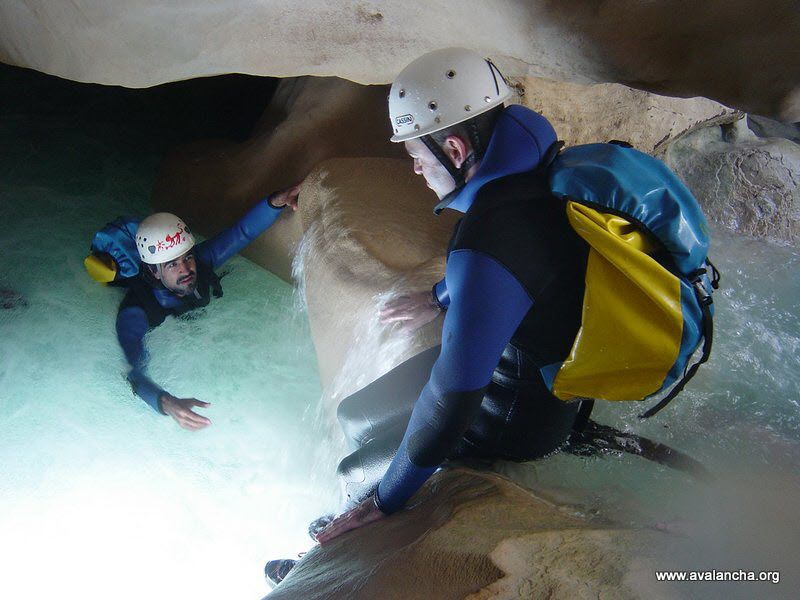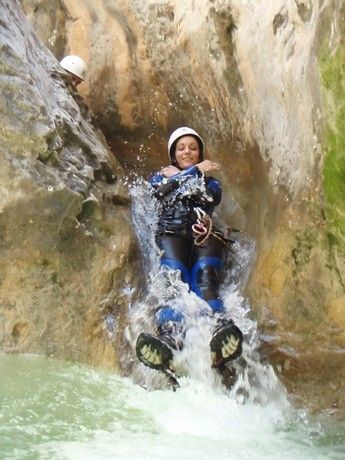
Walking or marching along a riverbed is one of the most frequent maneuvers you will encounter when descending a ravine. However, essentially other types of maneuvers are required. In them we will use many techniques other than just walking like rappelling, opposition, swimming, dexterity, jumping, etc.
Depending on whether we are going to descend a water cannon or a dry one, the difficulties will decrease or increase.
Basically, the biggest difficulties that we can find in a dry canyon are the vertical ones that we have to descend by means of the rappel technique. In some cases, the verticals are not equipped and we have to use the technique of opposition, which consists of recessing our body against the walls of the canyon (whenever its narrowness allows it) and blocking them, gradually descending.
In water cannons, the difficulties are increased by the presence of water, which will greatly enhance the descent, also going to make it more delicate.
Swimming
Swimming technique is necessary, but most of the time the swimming distances will not be considerable. Swimming will be made easier by the use of neoprene, which will increase our buoyancy.
In calm waters swim backwards taking advantage of the buoyancy provided by the neoprene and the backpack. In turbulent waters, always move with your feet ahead except in the case of rapids with small slopes where it is advisable to do so supported on the backpack that will float thanks to the drum or waterproof bag.
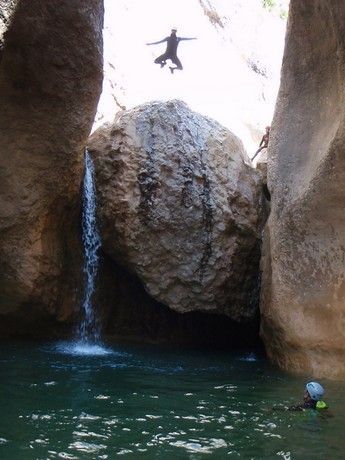
Jumps
Jumping is a technique that we will resort to simply for pleasure or necessity to avoid dangerous water movements. It is one of the most fun aspects of canyoning but also one of the main reasons for accidents.
To make a jump it is absolutely necessary to follow a protocol that will avoid fright or misfortune. Bad reception or overpressure in the eardrums or nose can cause considerable damage while jumping from 5 or 6 meters. To avoid it, is important to follow the appropriate technique. In addition, we will make sure that there is no hazard, such as rocks or submerged trunks, shallow depth, etc. that will increase the risk of accident.
Diving
This is a technique that we will not use very often on a mandatory basis, only in those cases where the passage is siphoned and we have no alternative but can also serve to recover material fallen on the bottom of a pond and even get out of some problem caused by living water.
Rappels
Rappel is a technique by which we can descend vertical walls down a rope, in a controlled manner, using friction against a descent device, placed in the harness.
Depending on the flow, the descent can be a lot of fun and refreshing or a matter of high technical level and commitment. The force of the water in its fall and in its reception when it reaches the pool, will be what we must evaluate to guarantee a safe descent.
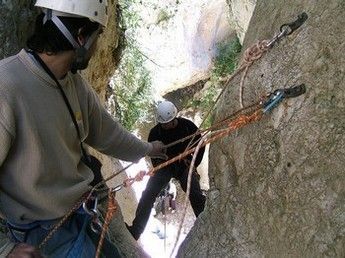
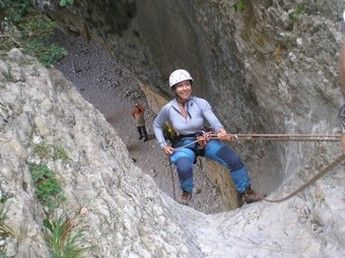
These are the main techniques that will facilitate our descent and minimize the risks. Making good use of them, we will make the activity safe and fun. The waterfalls are usually points of great beauty and guarantee excitement and fun.
[metaslider id=”6784″]

